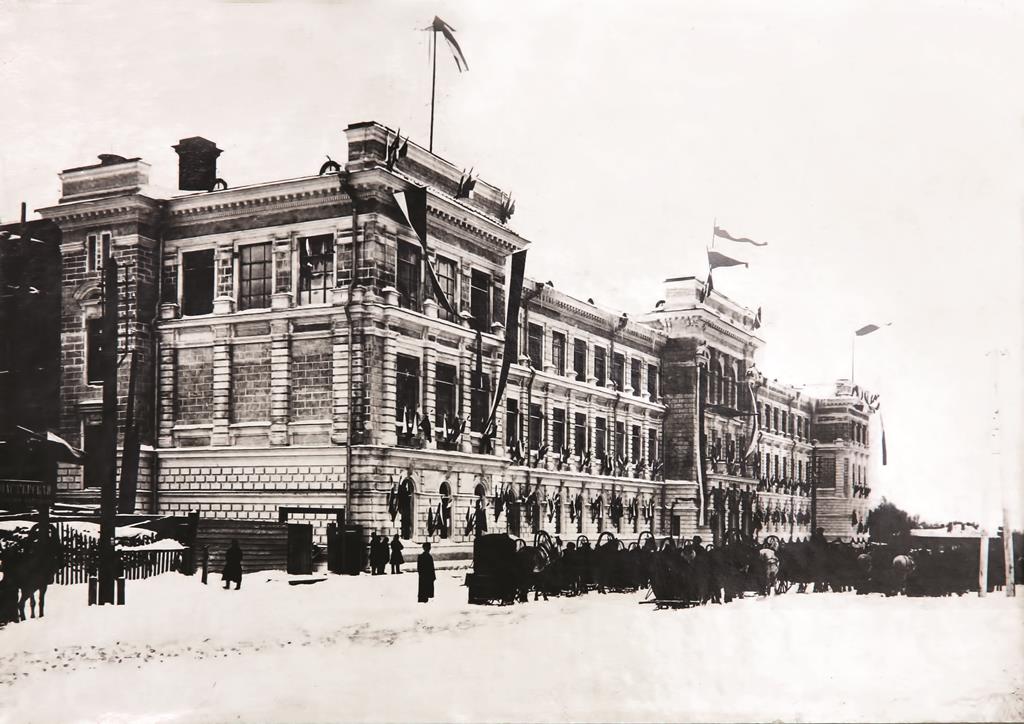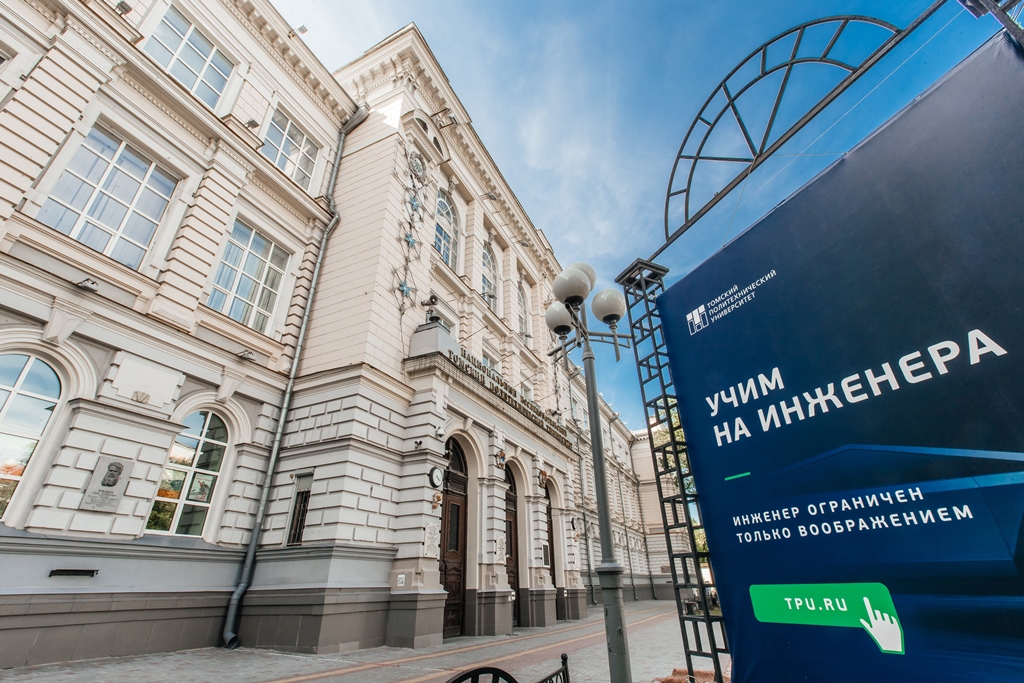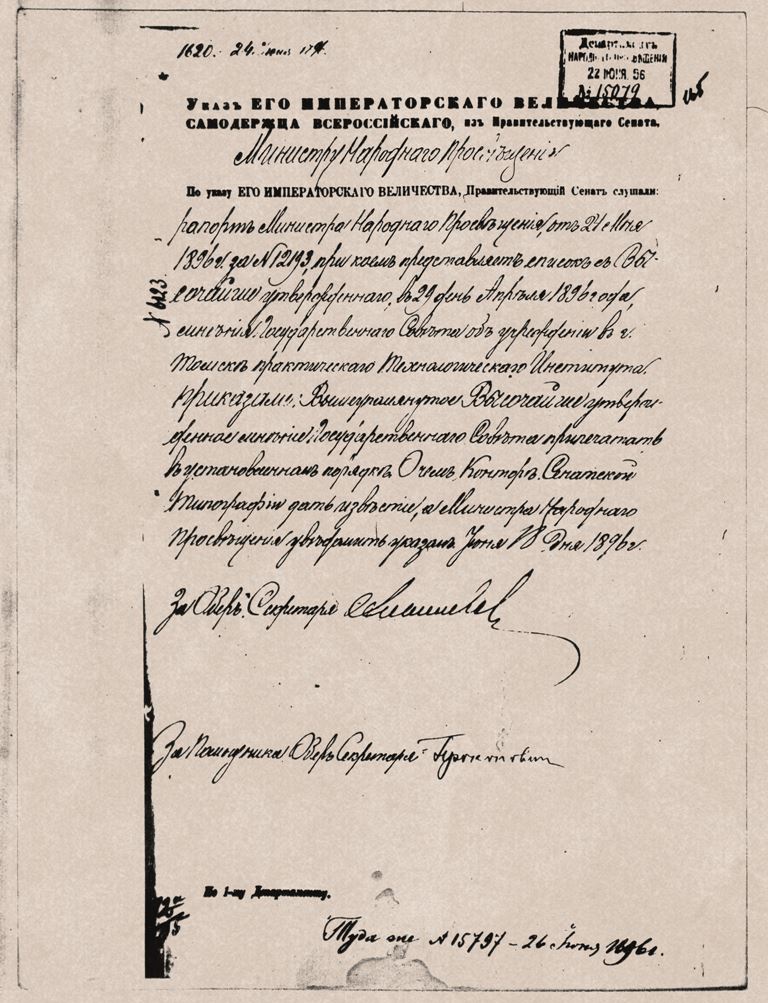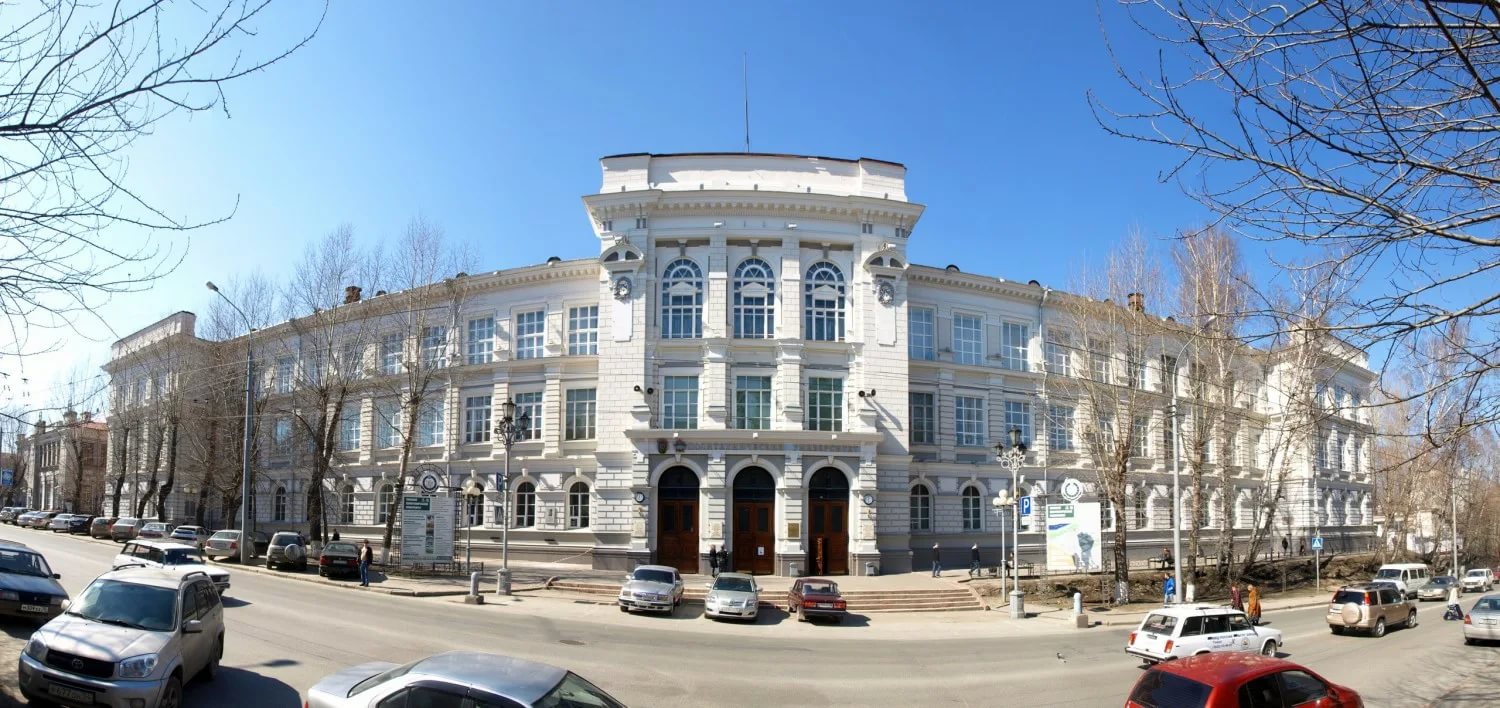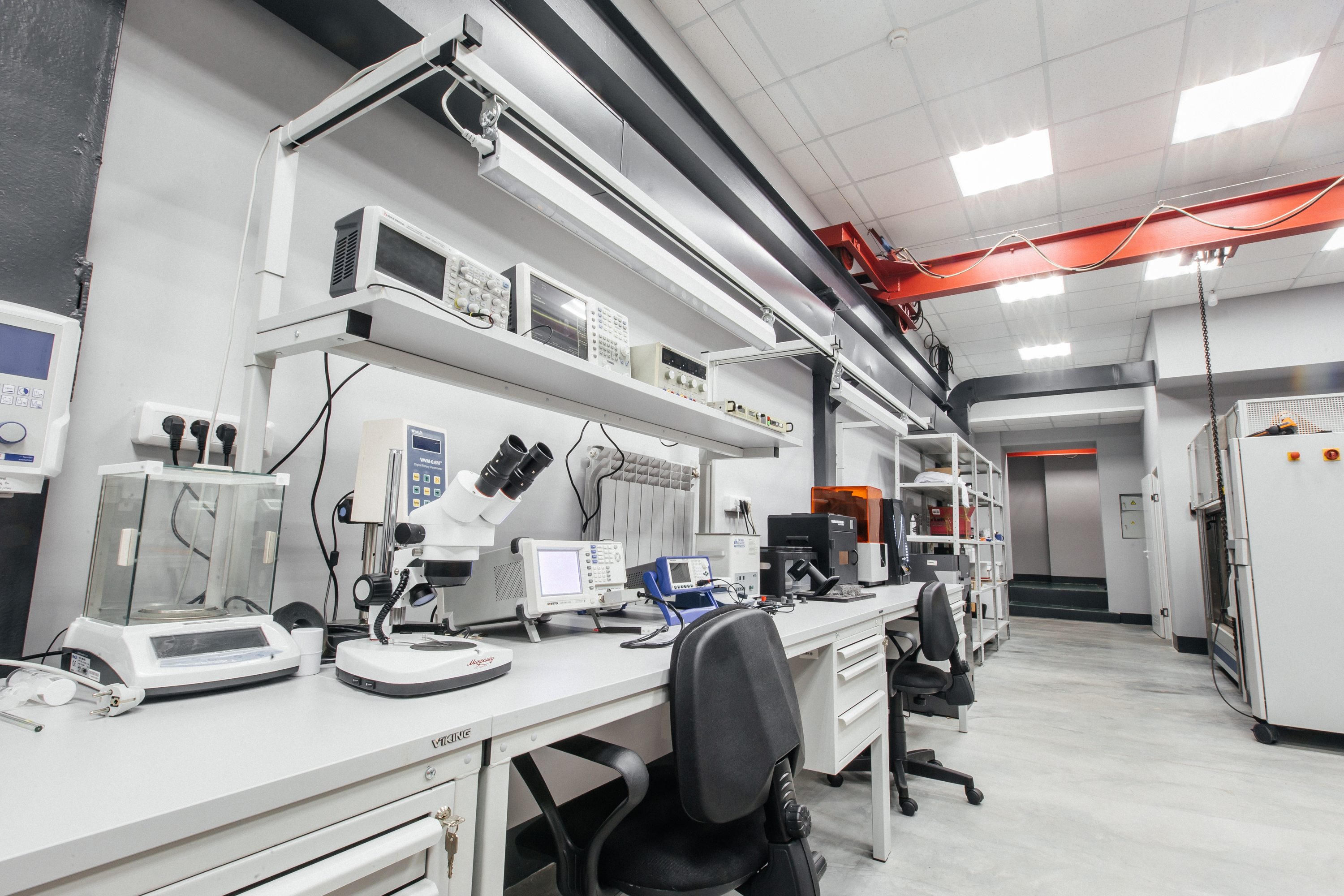1896
Foundation of Tomsk Technological Institute
National Research Tomsk Polytechnic University (TPU) was founded by the Emperor Nicolas II in 1896 as Tomsk Technological Institute of practical engineers. Historically, it is the fourth technical higher educational institution in Russia and the first one in its Asian part.
1900
TTI Opening Ceremony
The festive opening ceremony of TTI was held on December 6, 1900 (December 18, 1900, by the Gregorian calendar). It was timed to coincide with the name day of Nicholas II. The festivities lasted for 2 days and students were excused from attending classes.
1917
Institute Renaming
The change of the political system in Russia took place in 1917 and led to the reform of higher education. The changes affected certain aspects of the institute operation: it lost the title of Emperor Nicholas II and changed its coat of arms, the departments were renamed into faculties. The position of Director was renamed into Rector, as well as new positions of Vice-Rectors, Associate Professors and Assistants were introduced. The rules of student admission also changed, and higher education institutions opened their doors to women for the first time in history.
1923
Creation of Research Institute of Applied Physics at TTI
The first Siberian Research Institute of Applied Physics, currently named Siberian Physical-Technical Institute, was established on the initiative of Boris Weinberg as part of TTI. Professor Igor Sokolov became the Director of the Institute. The Institute of Applied Physics united Tomsk physicists and specialists in the field of the strength of materials and metallography. When the Institute was created, it was meant to play an important role in scientific support of Siberian industrialization planning and offering immediate solutions to physical and engineering problems put forward by the goals of Siberian industry.
1925
Renaming into Siberian Technological Institute
The Institute was renamed to Siberian Technological Institute (STI). It continued to develop as an applied engineering institute aimed to serve the needs of industrialization of Russia and Siberia. In October 1926, the Institute was named after Felix Dzerzhinsky, Head of the Supreme Soviet Council of National Economy.
1930
Eleven Independent Institutes Established within STI
Siberian Technological Institute was subdivided into a number of independent industrial educational institutions, namely Siberian Geological Prospecting Institute (Tomsk), Siberian Mining Institute (Tomsk), Siberian Mechanical Engineering Institute (Tomsk), West Siberian Institute of Agricultural Engineering (Novosibirsk), Siberian Chemical Engineering Institute (Tomsk), Siberian Construction Institute (Novosibirsk), Flour Milling and Elevating Institute (Tomsk), Institutes of Rail Transport Engineers (Novosibirsk, Tomsk), Siberian Institute of Ferrous Metals (Stalinsk), and Institute of Non-Ferrous Metals (Irkutsk). The newly created institutes received assets, premises, laboratories, equipment, and dormitories, and had a mission to educate multi-disciplined engineers.
1934
Renaming into Tomsk Industrial Institute Named after Sergey M. Kirov
Siberian Geological Prospecting Institute, Siberian Mechanical Engineering Institute, and Siberian Chemical Engineering Institute consolidated into Tomsk Industrial Institute. It opened its doors on July 1, 1934, consisting of six faculties, such as General Technological, Geological Prospecting, Mining, Mechanical Engineering, Chemical Engineering, and Power Engineering. There were 36 academic departments offering 20 educational programs.
1940
Order of the Red Banner of Labour Awarded to Institute
Tomsk Industrial Institute was awarded the Order of the Red Banner of Labour by the Decree of the Presidium of the Supreme Soviet of the USSR for a tremendous contribution to training highly qualified specialists for the state.
1944
Renaming into Tomsk Polytechnic Institute
Tomsk Industrial Institute became polytechnic and was further renamed into Tomsk Polytechnic Institute of the Order of the Red Banner of Labour named after S. M. Kirov. TPI trained radio engineers, nuclear physicists, and a number of other specialists.
1955
Opening of Tomsk Television Center
Under the supervision of the Rector Alexander Vorobyov, the first Tomsk Television Center was opened in Siberia. All the equipment for the television center was manufactured in the TPI Physics Department building in 1952-1955 with the direct involvement of the institute staff. The regular television broadcasting was launched in Tomsk in 1955. It was a gift from TPI engineers to Tomsk citizens for the International Labour Day celebrated on May 1.
1967
Launch of IRT-1000 Research Nuclear Reactor
The decision to construct the first and only reactor facility in Siberia was made on the initiative of the TPI Rector Alexander Vorobyov and the Director of the Research Institute of Nuclear Physics Ivan Chuchalin. Nowadays, it is the only operating research nuclear reactor in the Russian Federation. It is used for research purposes, such as fundamental and applied R&D projects, development of an isotope production technology for medical and other purposes etc. Besides, it is used for training, professional development, and advanced training of the staff working in the nuclear power industry.
1971
Awarding Institute with the Order of the October Revolution
In connection with the 75th anniversary of TPI foundation, it was one of the first institutions in the country to be awarded with the Order of the October Revolution for its success in training engineers. In accordance with the ranking of the Ministry of Higher Education of the Russian Soviet Federative Socialist Republic (RSFSR), it ranked top 3 polytechnic institutes in Russia (along with Leningrad Polytechnic Institute and Sverdlovsk Polytechnic Institute).
1976
TPI at Exhibition of Achievements of National Economy
TPI was the first technical institute of the RSFSR that was granted the right to showcase its achievements in the Enlightenment Pavilion at the Exhibition of Achievements of the National Economy.
1991
Reorganization into Tomsk Polytechnic University
Tomsk Polytechnic University (TPU) was the only engineering university in Russia reorganized by the Special Order of the Government that gave it significant advantages and a new impetus for development. The transition to a new status predetermined new goals of the university and, above all, a substantial increase in student training quality.
1997
Becoming a Particularly Valuable Object of the National Heritage of the Peoples of the Russian Federation
The decree of the President of the Russian Federation No. 275 on the inclusion of TPU in the State Code of Particularly Valuable Objects of Cultural Heritage of the Peoples of the Russian Federation was adopted on April 2, 1997. By that time, a little more than 70 institutions and organizations had been listed in the State Code of Particularly Valuable Objects of Cultural Heritage of the Peoples of the Russian Federation, including five universities. Tomsk Polytechnic University became the sixth one. The university received not only a high and honourable status but also a significant advantage in obtaining funds from the state budget.
2004
Elite Technical Education System Established at TPU
The system of elite technical education (ETO) was designed and introduced for the most talented and motivated students. The TPU ETO program is an additional educational program that is pursued simultaneously with a general learning pathway of a bachelor`s or master`s degree student.
2009
National Research University Status Conferred to TPU
TPU was listed among 12 winning universities (the only technical university in Asian Russia) in a competition of university development programs. It was the first university in Tomsk to be conferred with the National Research University status.

